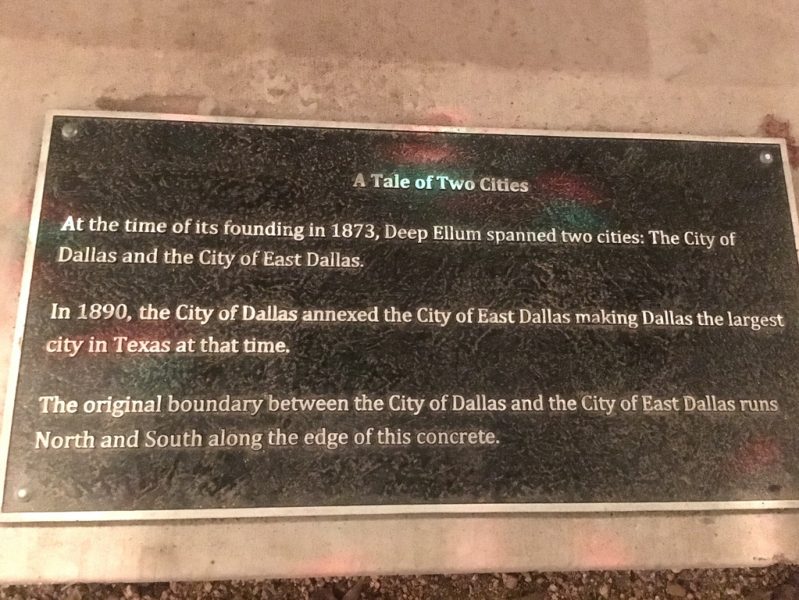At the strike of midnight New Year’s Eve 1889-90, Dallas grew in population by 38,067 souls, and, in the same instant, it became the largest city in Texas. A Deep Ellum venue has preserved the memory of that event in a way that smartly fits its ritz-in-the rough vibe.

Courtesy Dot’s/Facebook.
Deep Ellum’s Dot’s Hop House and Cocktail Courtyard is a sprawling, ambitious undertaking. Dining room, bar and kitchen — bustling at 7 on a Wednesday night — occupy the former Comedy House space on Commerce. An additional 10,000 square feet is the courtyard, spread out beneath the razzle-dazzle bling of a behemoth chandelier borrowed, I imagine, from some defunct Phantom of the Opera production.
“At the time of its founding in 1873, Deep Ellum spanned two cities: The City of Dallas and the City of East Dallas.”
Drinkers and diners discover more than 99 taps, an extensive — yet carefully curated — craft beer list, specialty cocktails showcasing rosemary and sage and cucumbers, and a rich menu featuring familiar comfort foods, add novel (and pallet-pleasing) modifications (the Mexican grilled cheese, for example, or grits with shrimp).
Partners Lou Delaney, John Williams, Paul Williams and Jeff Brightwell juxtapose flashy and rustic — a hip albeit history-appreciating aesthetic that is oh-so Dallas.
Most impressive to this diner/explorer of the cavernous campus — a smattering of gorgeous accents throughout notwithstanding (see the stained glass? Tom Landry is in there) — was a plaque on the western end of the courtyard, a concrete strip running along its gravely guts, entitled, “A Tale of Two Cities.”
I once edited an article by Dallas historian and archivist John Slate — the story of East Dallas’ 1890 annexation — and that’s the topic of said signage.

The sign at Dot’s. Photo by me, Christina Hughes, if you couldn’t tell.
Turns out, Dot’s sits on the original boundary between Dallas and East Dallas, each once independent municipalities.
“At the time of its founding in 1873, Deep Ellum spanned two cities: The City of Dallas and the City of East Dallas,” the panel reads.
Notes Slate, “With little doubt, a consolidation of Dallas and East Dallas benefited both cities. In March, 1889, State Sen. R.S. Kimbrough introduced a bill to repeal East Dallas’ charter and merge with Dallas, adding three new wards to Dallas and strengthening its tax base. The result was not only a win-win for everyone, but by making it legal on New Years’ Eve 1889, it bumped Dallas’ population to 38,067, making it the largest city in Texas in the 1890 census.”
Read the full story by John Slate, complete with old documents, here.
A version of this article originally was published in the East Dallas Advocate magazine.






Leave A Comment